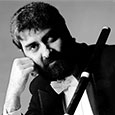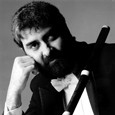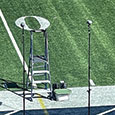It is hard to imagine any type of music where focused listening is more important than in Baroque works. My remarks are directed equally towards players of historical flutes and modern flute. No good ensemble playing can be made without careful and concentrated listening.
One of the principal aspects of Baroque music is the relationship between the solo part, such as the flute part and the bass line. Looking at an original print of a Handel flute sonata, for example, there are two lines of music – the solo line and the bass line. The bass line is not the accompaniment but rather the line with which the flute is playing a duet. In Baroque music the lines are of equal importance. In comparison, a modern edition of the Handel Sonatas might look somewhat different because there is generally a piano part that was written by a modern editor rather than the composer or anyone from the same century. These keyboard parts range from well written to quite poor, but the important thing to observe is not the notes played in the keyboard right hand but the notes in the left hand, the bass line.
J.J. Quantz, the famous flutist, composer, and writer about the flute, said the following:
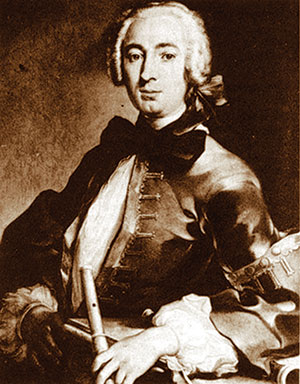
Johann Joahim Quantz
“[the flutist] must constantly direct his ear to those who play with him, particularly to the bass; in this fashion, he will be able to learn harmony, time, and purity of intonation so much the more easily. If he neglects this practice, his playing will always remain defective.”
“The musician will acquire greater perfection…if, together with the flute, he studies at least the science of through-bass, if not composition.”
In the Baroque era, it is very likely that a high-level flute player would be able to easily play the bass line on the harpsichord and realize, at sight, the figured bass. Basso continuo was an expected aspect of music literacy in the 18th century. For most flutists today, this would be a lot to ask. On the other hand, players certainly can learn the bass line and know it just as well as the solo part. In lessons, it is useful for the teacher to play the bass line on flute while the student plays the top part, and then do it the other way around. A side benefit is that students learn to play the flute in bass clef. I do a lot of playing this way with my students at Oberlin. Once students understand the bass line and its relation to the solo line, they are ready to work with a keyboard player. If they start with all the notes of the keyboard part, it is often difficult to sort out the bass line.
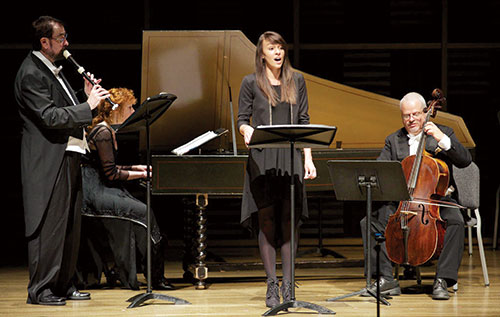
I also have students play from an original edition, often a facsimile of a printed edition found on IMSLP.COM. This way they can see the solo line and the bass line. Only in chamber music did Baroque flutists often read from a part with only their line.
The bass line is also the reference flutists use for tuning. In Baroque playing, usually not in equal temperament, flutists should play as in tune as they possibly can with the bass line and not all of the other notes flying by. It takes some practice to learn to tune in this way, but it is critical to making Baroque music sound its best. Another crucial concept in Baroque music is that dissonances are stressed, and consonances are a relaxation. Those dissonances take place between the bass and solo line. Without knowing the bass line and listening to it, players are unlikely to know when they are playing a dissonance.
The listening situation gets more complicated when playing chamber music as opposed to solo works. Flutists often play Baroque trio sonatas with two flute parts and a bass line. Again, the bass part should not be thought of as the accompaniment but as a single voice with which the two flutes play. Listening in this setting is tough because flutists are focusing carefully on the other flute part to make sure they are perfectly together and in tune. However, they also should be paying attention and reacting or communicating with the bass line. I often hear performances where the flute players are working nicely together but out of tune, usually sharp, with the bass line. I can tell you from my own experience how easy it is to do this. I was once playing an orchestral piece with two semi-solo flute parts and strings. We were very good at playing together, and at the end of the performance I thought we had done an excellent job – great sound, great tuning – what more could you want? Unfortunately, on listening to the recording later, I heard that we were quite together in every way, but sharp compared to the orchestra.
Many teachers and performers talk a lot about watching the other players so that you can see what they are doing. While I think that watching is important part of performing, I do not find it has so much to do with playing together. I was in a small chamber orchestra rehearsal once, and we had a musical figure that we were having a difficult time doing in a unified way. The director kept insisting we were not watching each other well enough. I finally got brave and suggested that everyone close their eyes and concentrate on listening in great detail. This worked very well.
In Baroque music, it is important to realize that the object is not always to copy exactly what the other player does, especially in a trio sonata. I like to think of the two parts as being in a conversation with each other. When you talk with someone, you do not just repeat back what they just said; you reply in reaction to what they said. This is an important idea for musical ornamentation where two people following each other with the same ornaments is uninteresting. Listen carefully to what the other person is saying and then respond in your own way. You can only do this well by listening carefully and trying to understand the other players.
